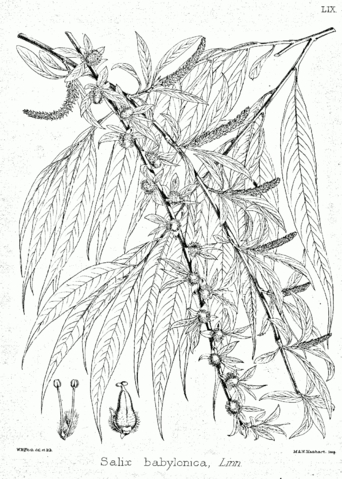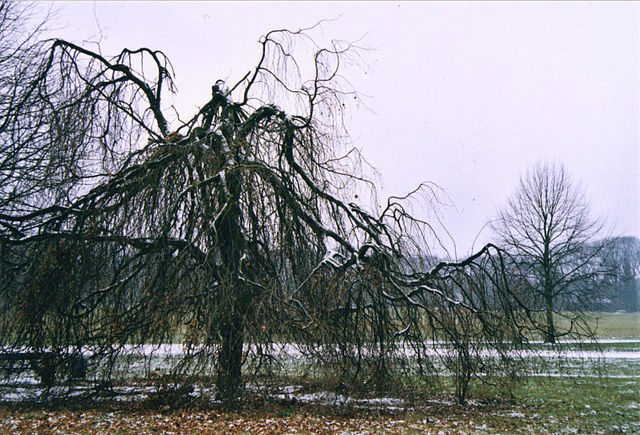Weeping Willow : Weeping Willow- Natural History
Given the scientific name Salix babylonica by Linnaeus in 1753, it was originally thought that the Weeping Willow originated in the Middle East. This can be attributed to a mistranslation of Pslam 137, where it was thought the Hebrew Slaves of Babylon wept for Zion under a willow tree. It was later discovered that the “Babylon Willows” were a species of poplar and that the Weeping Willow originated in Northern China. Over the years, various culitvars of Salix babylonica were traded along the Silk Road, making its way to Europe and southern reaches of Asia and Oceania before later being introduced to North America.
In North America, the Weeping Willow can be seen growing as far north as the southern coast of Alaska and as far south as central Mexico. In the book Exotic Forest Trees in the British Commonwealth, the author R.J. Streets states that, as of 1962, specimens of Salix babylonica can be found in Australia, Cyprus, Fiji, Great Britain, India, New Zealand, Malawi, Zimbabwe, Tanzania, Uganda and South Africa.
The ideal habitat of the Weeping Willow is a moist, humid environment. Most Weeping Willows can be found along rivers and stream beds where an abundance of moisture can be found, though the Weeping Willow can survive in drought situations. The roots of the Weeping Willow are rather aggressive and need plenty of space to grow as they can cause damage to pipelines of houses and plug up water lines if planted too close to buildings. The Weeping Willow can grow in a number of soil types, including alkaline and acidic soils.


